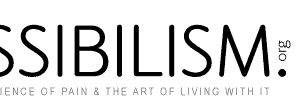Going on vacation should reduce pain and relieve stress, not cause it. Traveling can bring an avalanche of hurdles when you’re living with chronic pain. As I begin planning for summer travel, one of my goals is to ensure my journey is comfortable. Here are is what I’ve learned about staying pain free on vacation.
Before travel
1. Plan for enjoyment. The idea of just getting up and going on a vacation seems attractive. However, if you suffer from pain, it’s better to come in prepared. Taking some time to plan your trip may save you a whole lot of stress and aches in the long run. If planning itself is stressful for you, break it up into several short planning sessions over a few days.
2. Find a pain-friendly adventure. Creating an adventure that doesn’t aggravate pain means balancing activity with relaxation. After all, you want to create good memories instead of flare-ups. Make an itinerary that is consistent with the amount of activity you can manage in your daily life. If you amp up the activity, remember to also amp up the relaxed pampering.
3. Set expectations with friends and family. Talking with your vacation buddies about expectations and practical limitations can be helpful. Sometimes friends and family are so excited that they plan for more than is healthy for you. Since you are your own pain expert, it is important to communicate your needs. This way you can prevent flare-ups and have an enjoyable time away. Planning for relaxing alternatives and/or breaks is healthy, and you might be surprised how many companions are ready to join you for some peace and quiet after a few days of being on the go nonstop.
4. Pre-arrange any required accommodations or travel requirements.Make calls (airline, bus line, train agency, hotels, cruise lines, hotel) ahead of time and discuss how your health condition may require additional services. That may mean assistance with luggage, boarding early, or storage of medical devices.
It is helpful to ask airlines if you need to arrive early due to any assistance you need. You also want to make sure any items you want to carry on the plane are allowed (see item 8 below). For example, some airlines may not allow reusable instant heat pads or ice packs. Alternatively, you can ask if they would be willing to fill a hot water bag for you or give you some ice cubes to put in a zip lock for a DIY ice pack.
If you’re taking a taxi, call them up and ask if the driver can help carry bags (or any medical devices, wheel chair, etc.) and if they have the space or comforts you need.
5. Get a doctor’s note for your medication. Although most pill bottles come with your name and doctor’s information, for people with chronic pain that may mean carrying multiple bottles and this might trigger extra scrutiny if you’re traveling on a plane. I have found that getting on board is faster with a simple letter from my doctor that lists all my medication. It is also a good idea to check if your medications are legal in the destination. If not, it may be better for you to ask for an alternative from your doctor. Also remember to ask your doctor how to adjust dosing to match altered sleeping and eating patterns during your vacation.
6. The emotional support pet option for air travel. Generally, airlines are not fond of allowing pets in the cabin. However, since pets are quite good antidotes for depression, you may qualify to have your furry friend sit with you on the plane. There are airlines that allow pets to come with you on your journey. For this option, may need a letter from your doctor stating that your pet offers emotional support. It may make a world of difference to you, so call your airline and ask if this is a possibility.
Your Packing Checklist
7. Pack your luggage light and focus on comfort. Have loose fitting clothing and good walking shoes for your trip.
8. Put comfort in your carry-on as well. Comfortable items aren’t any help to you if you cannot access them when you need them. Make sure to keep quick comforts at hand by loading your carry-on luggage with goodies such as:
Back/ neck support pillows
Hot/cold packs (check with airline in advance)
Audio pain relief tools: Breathing/hypnosis/relaxation exercises on your playlist
Eye mask
Ear plugs
Chewing gum or decongestant for ear pain
9. Pack your own headphones. The headphones available on planes/trains are usually of poor quality. Noise-canceling headphones and in-ear headphones are great and can help block out external noises.
10. Take your medications, doctor’s note, and emergency contact info. Be sure to take enough medication for your entire trip and a little extra should your return be delayed. Add an emergency contact and your doctor’s phone number to all your luggage tags and wallet.
While Traveling
11. Remember to stretch. Before boarding, take time to stretch at the gate so you’re as relaxed as possible. During flights, get up or do seated exercises to help you from getting stiff limbs or aches. You can also download an stretches worksheet to print and take with you on your vacation.
12. Get sleep on long journeys. Wear your ear plugs and mask and try to get some sleep. Time your sleep with the time at your destination. Try not to drink alcohol since it dehydrates and makes it harder to get a good sleep.
13. Eat healthy. Nutritious food will insure you have energy and your body feels good. It will also help you avoid gaining any vacation pounds. Remember to be watchful of foods that increase your pain while dining out. Don’t hesitate to ask about ingredients if need be.
14. Stay hydrated. Dehydration can effect mood, cause headaches, and can ruin your trip. Even when jet-lagged, do not drink more caffeinated drinks than you would normally. Drink enough water before starting your trip and during your travel to stay well hydrated.
15. Remember to be flexible. Pain can be triggered by things outside your control, so having a flexible mindset can help should challenges arise.
Have a great vacation!

*This post was submitted for the PFAM Blog carnival hosted by Maria at My Life Works Today. I’m sure it will be a great carnival, so be sure to check out her page on May 25th!
{ Comments on this entry are closed }










